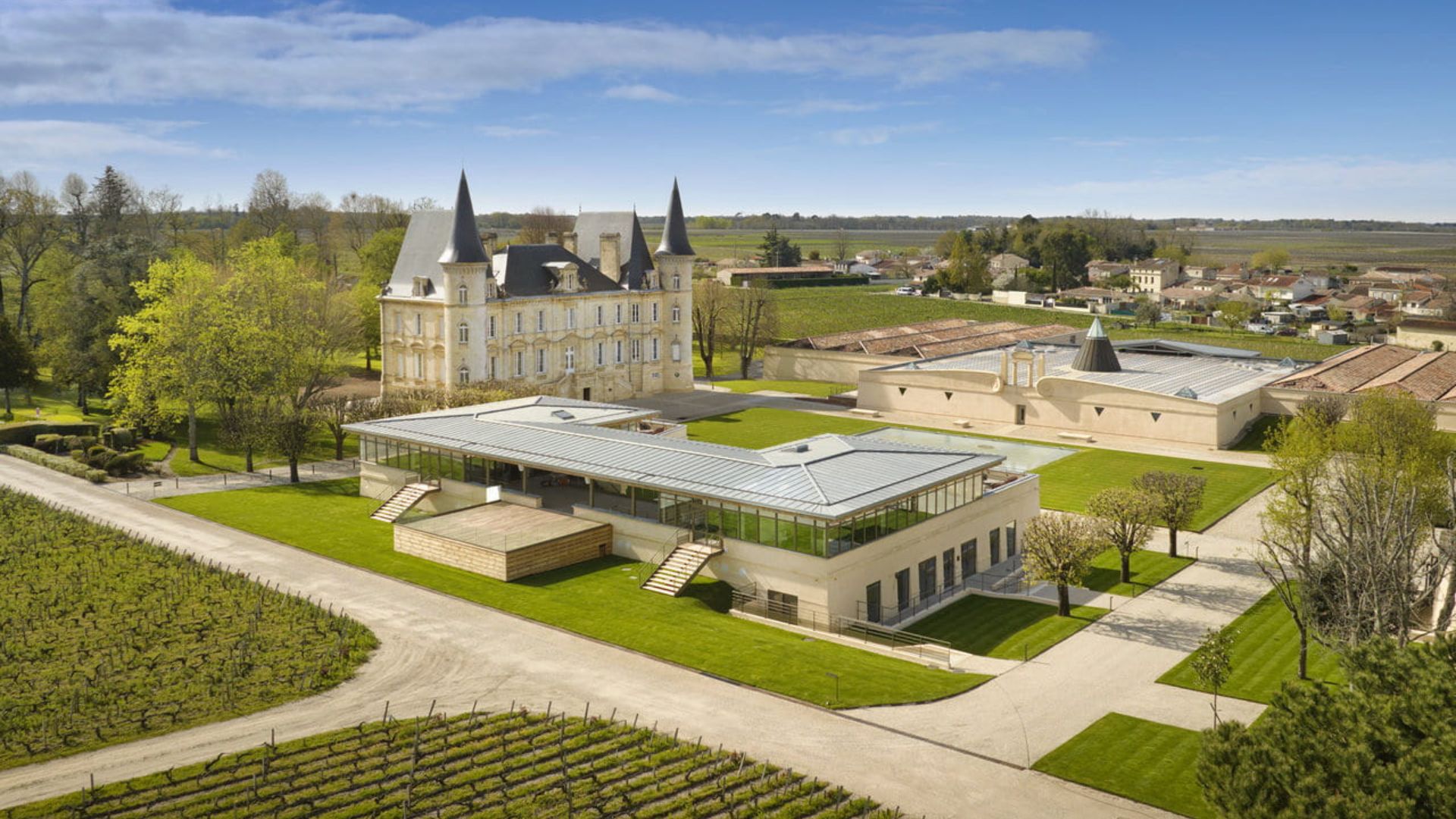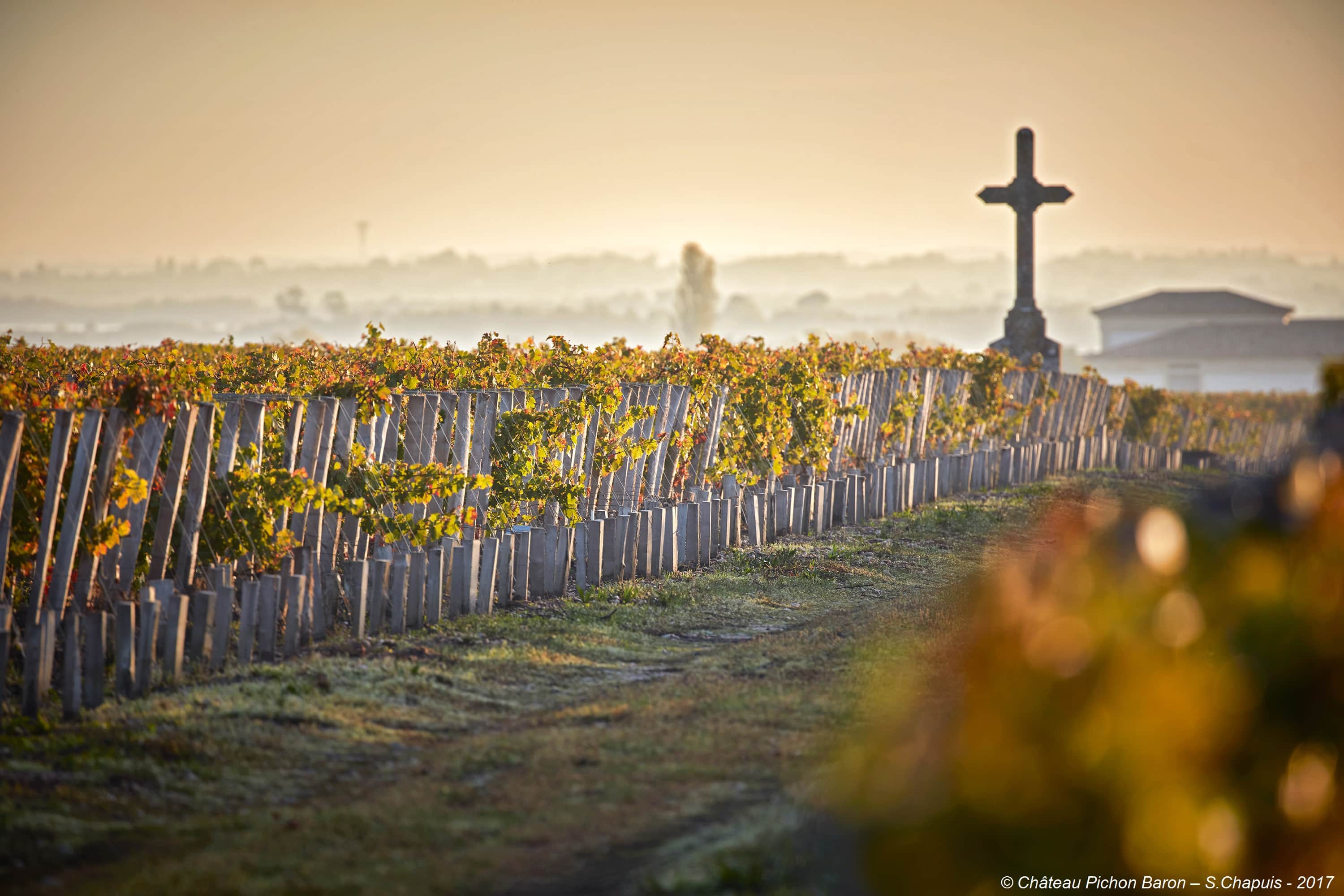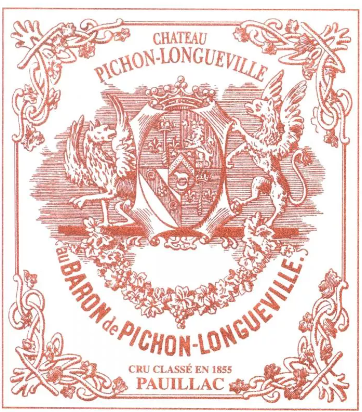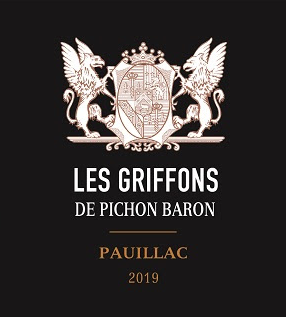
Château Pichon Baron
D2
33250 Pauillac
Tél. : +33 (0)5 56 73 17 17
Château Pichon Baron, Second Cru Classé in 1855, extends over 73 hectares in the Pauillac appellation. This “Super Second”, next to Pichon Comtesse de Lalande (which was split into two separate estates in 1850) and Château Latour, has been owned since 1987 by the “Axa Millésimes” vineyard branch of the AXA insurance company. Managed first by the late Jean-Michel Cazes, then since 2000 by the charismatic Christian Seely, Pichon Baron is one of the most prestigious and sought-after brands on international markets. The progress made over the decades, with wines gaining in breed, elegance and power, has made this prestigious cru one of the finest in the Médoc.
The origins of the estate can be traced back to 1694, when Jacques de Pichon Baron de Longueville married Thérèse de Rauzan, daughter of Pierre De Rauzan, the creator of the estate he had bought five years earlier. Pierre De Rauzan already owned a vast vineyard in Margaux, which gave rise to Château Rauzan-Gassies and Château Rauzan-Ségla. In 1689, this merchant and farmer from Latour had bought vineyards south of Pauillac, precisely near Latour.
The estate remained unchanged for many generations, with the descendants remaining very attached to their Pauillac estate and striving to improve the wines, which already had excellent reputations at the time.

But the 19th century saw a major turning point. In 1850, new rules of inheritance led to the property being divided into 2 parts: that belonging to Baron Raoul Pichon de Longueville (2/5) gave rise to the Pichon Baron estate. The second went to his three sisters, giving rise to Château Pichon Comtesse. To mark this separation and distinction, Raoul de Pichon-Longueville had the present château built in 1851. It quickly became a 2nd Cru Classé in 1855, during the famous classification for the Universal Exhibition ordered by Emperor Napoleon III. Much later, Château Pichon-Longueville Baron left the Pichon de Longueville family in 1933, the Pichon heirs having been forced to sell the property. Jean Bouteiller bought it. The new owner tried to maintain the reputation and quality of the wines until he ran into difficulties in the 1960s and 1970s (when the Bordeaux wine crisis began). Jean Bouteiller managed to hold on to the estate until the mid-80s, when he sold it to AXA, an insurance company that wanted to develop and diversify its investments in wine. AXA Millésimes, its subsidiary dedicated to wine acquisitions, bought the estate in 1987.
AXA Millésimes then asked a leading local figure, Jean-Michel Cazes (known for his Château Lynch-Bages (5th Cru Classé in 1855) and Les Ormes de Pez in Saint-Estèphe) to become the group's vineyard manager. In 1988, major investments were decided upon and carried out, including the complete reconstruction of the vat room and cellars. This impressive ultramodern complex, partly underground, is located opposite the château, which will also be renovated. In 2008, the work was accompanied by the construction of a new winery designed to facilitate all production and vintage management processes. In 2000, Jean-Michel Cazes was succeeded by Christian Seely (an Englishman, son of a leading wine journalist), who has since been at the helm of the estate with the support of Jean-René Matignon, then Pierre Montégut as technical director, and Jacques Boissenot, the renowned oenologist of the Médoc crus classés. Since 2022, Pierre Montégut has also managed Château Suduiraut (Premier Cru Classé in 1855 in the Sauternes appellation) and Château Pibran (another Pauillac).
Last but not least, in the spring of 2023, the vineyard will be equipped with facilities to welcome the public, making it a truly special place for wine tourism.

With 73 hectares of planted vines, perfectly situated opposite its famous neighbor Château Latour and the excellent Château Pichon Longueville Comtesse de Lalande, Pichon Baron produces splendid wines on deep Quaternary gravel and an alios subsoil - allowing the plots to drain perfectly. These are highly sought-after flasks, easily sold both as Primeurs and as deliverables on international marketplaces. It's worth noting that half of the estate benefits from land that is absolutely identical to that of the famous de Latour. Does this mean that Pichon Baron has the terroir of a Premier Cru Classé? In many respects, nothing could be further from the truth, but 1855 came and went, freezing it in second place in the classification. Nevertheless, given the size of the wines produced each year and the prices at which each vintage is sold, it's not incongruous to call it a “Super Second”, which it certainly is. The grape varieties are typically Médoc, with a high proportion of Cabernet Sauvignon (65%), followed by Merlot (30%), Cabernet Franc (3%) and Petit Verdot (2%). In terms of vineyard management, the vineyard benefits from soil ploughing, grassing techniques and “green harvesting” to fine-tune the ripening and maturity of the grapes left on the vines in July. The vineyard is protected by a “lutte raisonnée” approach, with a minimum use of phytosanitary products. In 2000, Pichon Baron was the first Bordeaux wine to receive environmental protection certification.
The wines stand, as it were, at the top of a certain hierarchy of Médoc crus. Admittedly, Pichon Baron is not a Premier Cru Classé in 1855, but its wines have all the hallmarks of the Left Bank's finest. Supervised by the teams of Jean-René Matignon (the cellar master who vinified almost 40 vintages at Pichon Baron), who handed over to Pierre Montégut in 2022, and with the sound advice and expertise of Eric Boissenot (son of the great Jacques Boissenot), the wines of Pichon Baron have a style remarkable for its purity and long, straight character on the palate, all sheathed in tannins of great nobility and elegance. They have the style of Pauillacs, vigorous, sappy and powerful, but with finesse and density that give the wine real weight and length on the finish. The Cabernet Sauvignon grapes, which make up the majority of the Grand Vin blends, give the full measure of Pichon Baron's terroir of excellence, without omitting the glamour and roundness of Merlot and the freshness of Cabernet Franc. The wines have gained in precision and character, and the plot structure and age of the vines are no strangers to this.
Since 1986, Pichon Baron has also produced a second wine: Les Tourelles de Longueville. To produce this second wine, which is obviously made from carefully selected plots that are not included in the Grand Vin, Pichon Baron uses a plot dominated by Merlot: the Saint-Anne plot. The second wine is fruity, greedy and fleshy, with a delicate, less dense structure on the palate than its big brother. In 2012, Axa Millésimes launched another second wine, Les Griffons de Pichon Baron. Made from 50% Merlot, this wine certainly gives a youthful touch to the historic second wine: Les tourelles de Longueville. The packaging is equally attractive. In some respects, it could even be said that this second wine is closer to the Grand Vin, when Les Tourelles was a wine more marked by the youth of the vines, while still being a worthy second wine. Les Griffons are radiant, with fruit to spare and abundant, and a mouth that's not lacking in dynamism.

The Grand Vin blend incorporates 80% Cabernet Sauvignon and 20% Merlot. The nose displays aromas of blackcurrant, black fruit and cigar leaf, mixed with floral notes. The palate is powerful, structured and aromatic. The tannins are well-integrated, ripe and silky, giving complexity and depth to the whole. A superb finish of freshness and lingering fruit. A fine Pichon Baron, less demonstrative than the 2022 or 2019, but a Pauillac of great beauty and great ageing potential.

Made from historic vines, this second wine benefits from the same long cellar aging as its big brother, the Grand Vin. Nevertheless, the blend is more balanced and less Cabernet Sauvignon-driven, with a more or less equal proportion of Cabernet Sauvignon and Merlot: 59% Cabernet Sauvignon vs. 41% Merlot. Like many second wines from the Médoc and Bordeaux in general, Les Griffons de Pichon Baron is a more supple wine. What the estate is aiming for with this wine is to be the perfect echo of the first label. The wine has plenty of aromatic freshness, energy on the palate, even tonicity. Very expressive at this stage, we like its licorice and black fruit character, with hints of tobacco. On the palate, there's plenty of presence, with fruit, sheathed tannins and a delicious, long finish. A total success in this vintage of excellence.
1887-1928-1929-1945-1947-1949-1953-1955-1959-1961-1970-1975-1978-1981-1982-1983-1985-1986-1988-1989-1990-1996-2000-2003-2005-2009-2010-2015-2016-2018-2019-2020-2022-2023

Website under construction
Available Soon